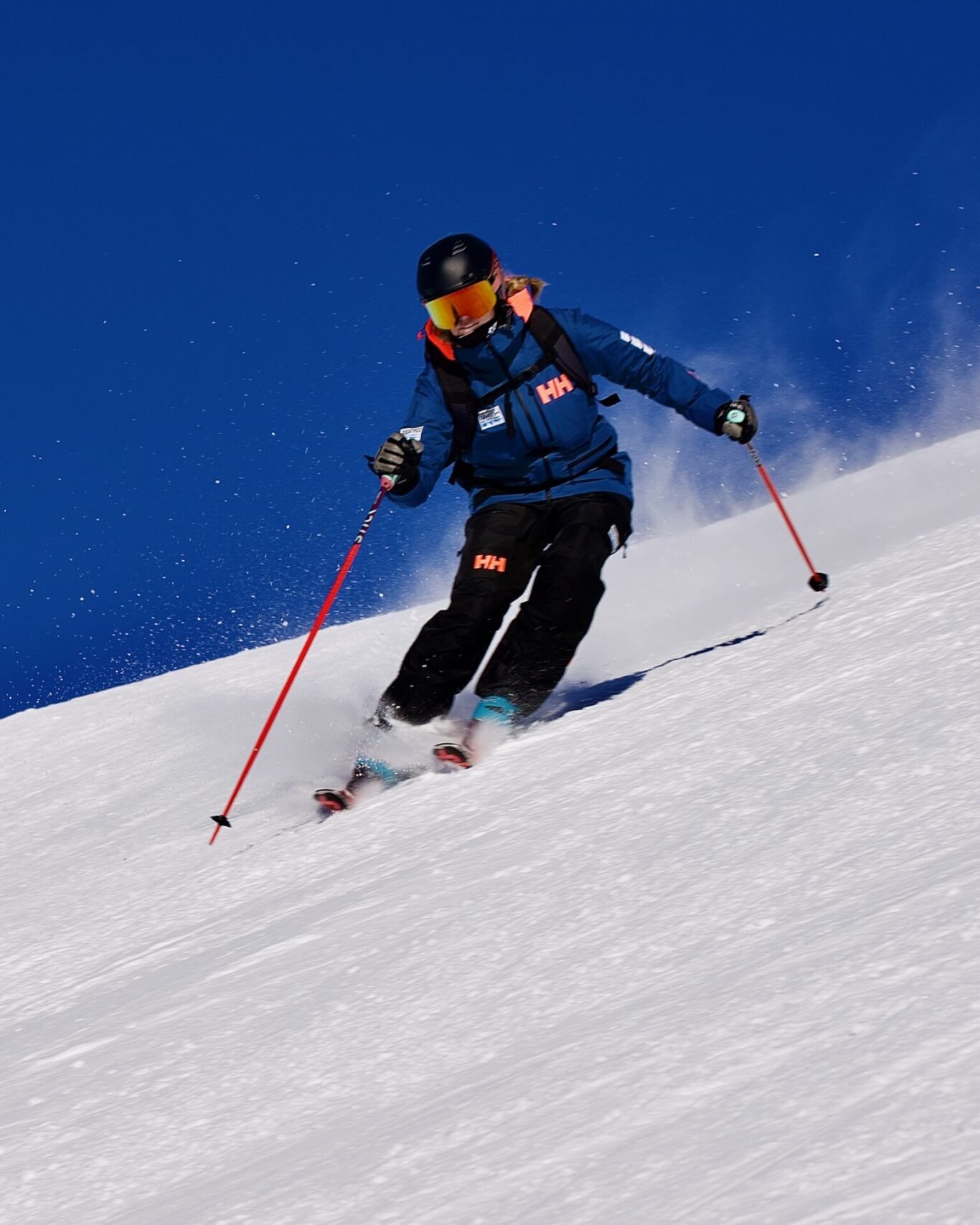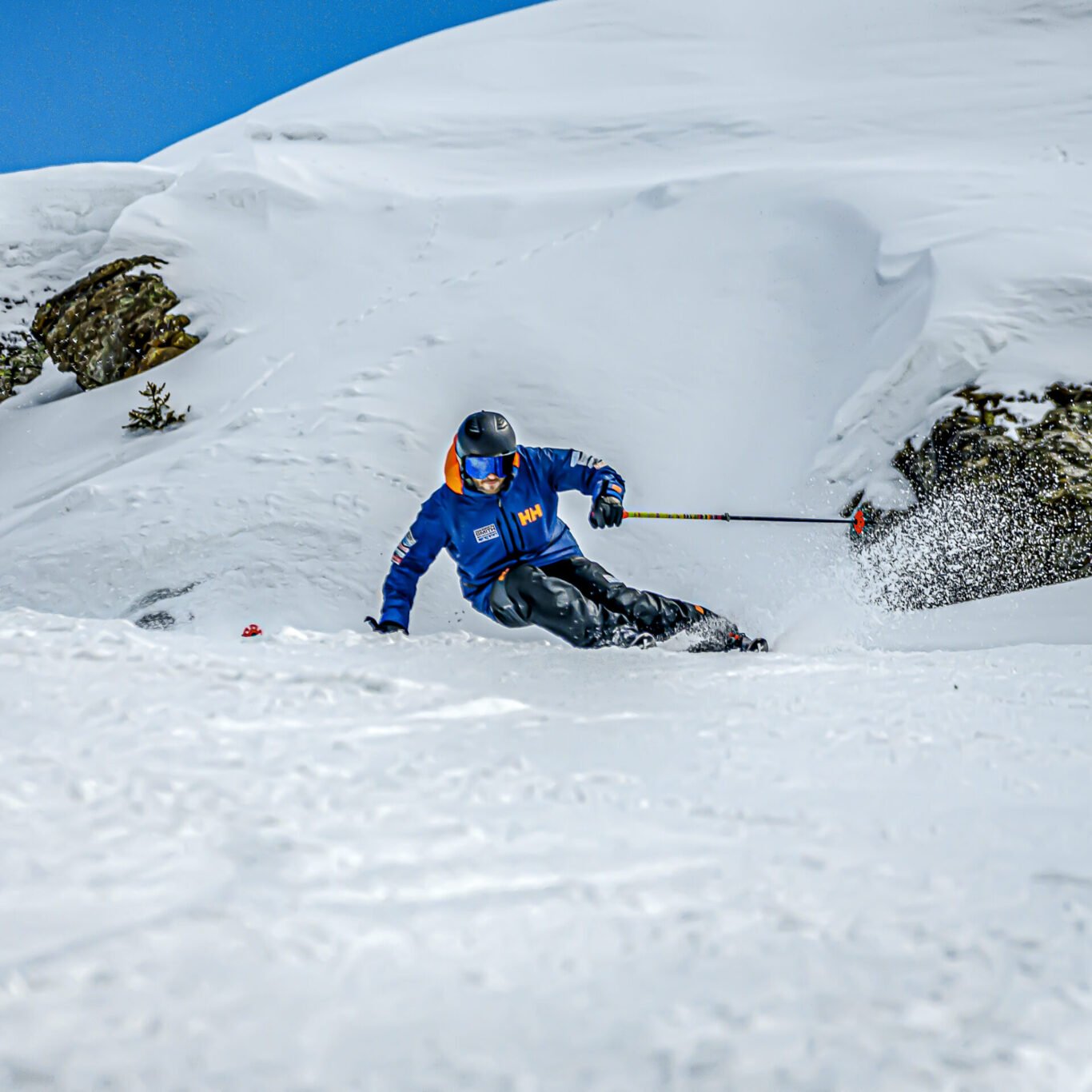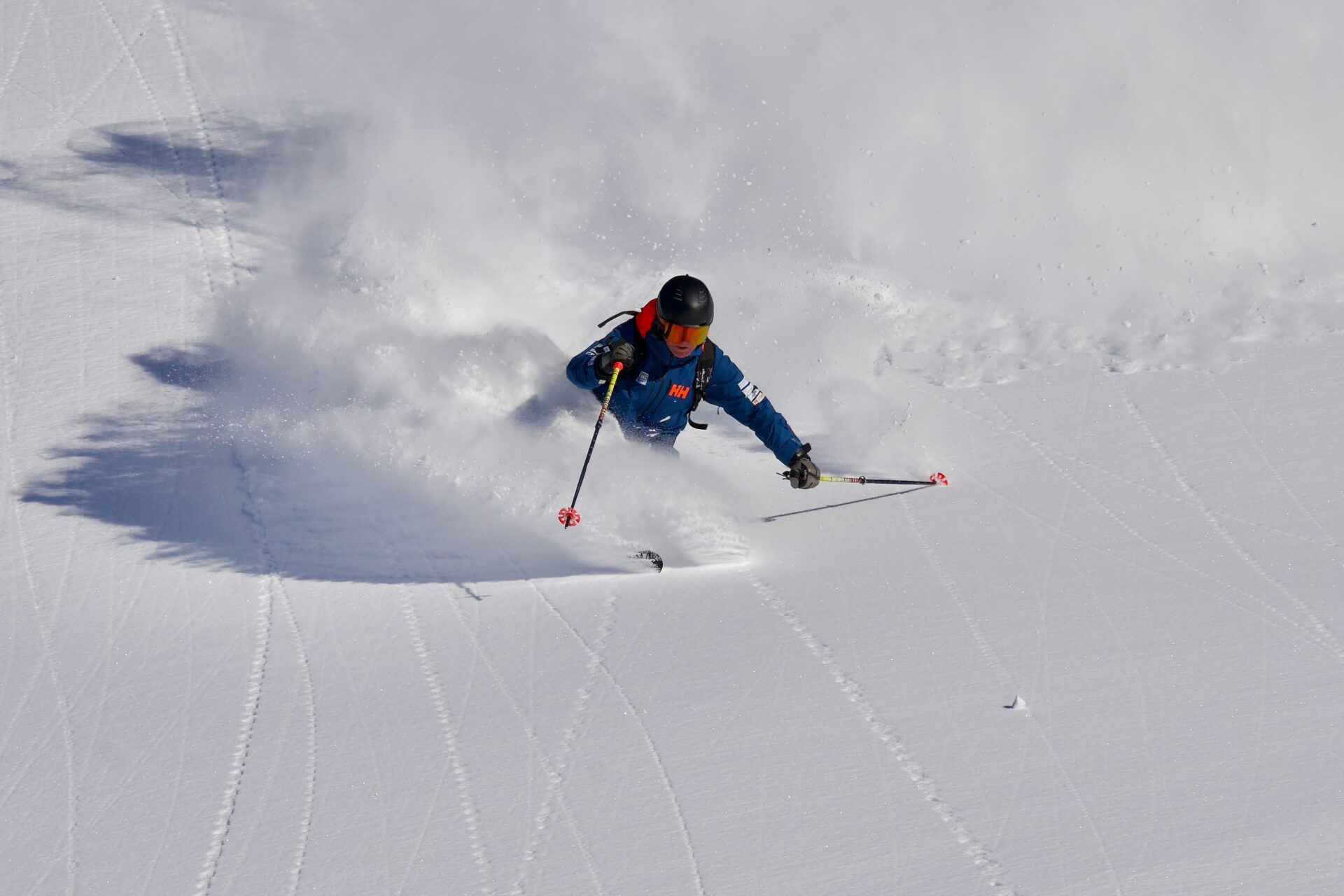Let us move on to our next subject, Skier Symmetry. The underpinning idea of this topic is trying to maintain an even distance between our legs, from our feet up to our hips, ideally the distance between feet will match the distance between knees which will all match up with the distance between femurs at the hips.
Why does this have importance in skiing? There are a couple of reasons for symmetry in the skiers legs being desirable, the first is trying to line us up in our strongest, most bio-mechanically effective way. When skiing we are dealing with forces coming back from the snow up through our body, if we can line our body up, Skier Symmetry particularly focusses at the knees, with good symmetry of our legs we will be in the strongest and safest position to deal with the build up of forces as we ski more and more dynamically. For everyone there will be a difference in how well we can achieve symmetry, it all relates to your individual make up. Tightness or weakness in certain muscle groups can play a part in your leg alignment, tight hip flexors and weak glutes are often the cause for a knock kneed A-frame bias in your natural stance. Women are also more likely to have a natural knock kneed leg alignment, this is due to physiological changes as the body develops through puberty.

Technically we are trying to ensure that both skis are working together at as similar as possible lateral angles as possible, if our legs are evenly spaced this should be the outcome if all other aspects are correct. So let’s start at the feet. To have a chance to ski with symmetry we must be able to stand with even pressure between the ball of the big toe, little toe and the heel. When we find this ‘tripod’ at our feet, best done barefooted, we can see what our natural alignment is. With our feet hip width apart, this is where we could draw a line from the middle of the foot straight up from the ground to the middle point of where the femur sits in the hip socket, if alignment is perfect this line should also pass through the middle of the knee. If it is not we might have to work on our physiology to try and address the imbalance or look at how are feet are supported with the use of correct and well made footbeds.
The third aspect in Skier Symmetry is making sure we can control the width of our stance as we ski, this is the function of the 10second test we use, we are firing up and becoming aware of the muscles that control adduction and abduction of our legs. When skiing our skis are constantly being pulled apart or pushed together, imagine walking on ice its really hard to keep your feet where you want them as the surface is slippery. The other aspects is when the snow gets deeper and our skis are immersed in snow, if our skis are trying to go in separate directions due to being on different angles we will have to be fighting to keep control. For us to keep control of our skis in deep snow we really need to have activation of the muscle groups controlling adduction and abduction. If these muscle groups are firing and strong enough we will also have the best chamnce of maintaining symmetry.
Have a further look here.


